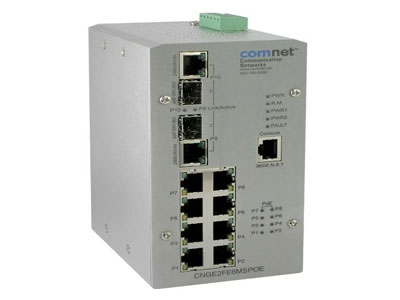Key Takeaway
TCP/IP is a standard communication protocol used in general networks, like the internet, to transfer data between devices. It focuses on reliability and ensures data reaches its destination in order, even over long distances. TCP/IP is widely used in office and home networks for tasks like browsing and file sharing.
Industrial Ethernet, on the other hand, is designed specifically for industrial environments. It uses Ethernet technology, including TCP/IP, but adds features for rugged conditions and real-time performance. Unlike standard TCP/IP, Industrial Ethernet can handle harsh environments, fast response times, and critical automation tasks. The key difference is that TCP/IP is a general-purpose protocol, while Industrial Ethernet is tailored for industrial automation and control systems.
Understanding TCP/IP in Traditional vs. Industrial Networks
TCP/IP (Transmission Control Protocol/Internet Protocol) is a standard protocol suite that enables communication across devices in a network. It forms the backbone of modern digital communication, ensuring data packets are transmitted reliably. In traditional networks like offices or homes, TCP/IP ensures smooth browsing, file sharing, and video streaming.
In industrial networks, TCP/IP also plays a foundational role, but the challenges are greater. Industrial settings often involve extreme conditions like high temperatures, vibrations, and electrical noise. While TCP/IP is capable of reliable data transfer, it lacks the robustness required to handle these harsh conditions directly.
To address these challenges, Industrial Ethernet builds on TCP/IP by adding ruggedized hardware and real-time communication protocols. This allows it to meet the high-speed and deterministic data transfer needs of industrial automation systems.

How Industrial Ethernet Extends Beyond TCP/IP for Industrial Use
While TCP/IP focuses on general-purpose networking, Industrial Ethernet takes it a step further by tailoring the technology for industrial applications. Industrial Ethernet uses TCP/IP as its communication backbone but incorporates features to make it suitable for demanding industrial environments.
For example, Industrial Ethernet adds redundancy protocols like Rapid Spanning Tree Protocol (RSTP) to ensure that communication continues even if a network link fails. It also supports real-time protocols, such as EtherNet/IP and PROFINET, which prioritize critical data for time-sensitive tasks.
Another key extension is in hardware. Industrial Ethernet uses ruggedized switches, connectors, and cables that can withstand dust, moisture, vibrations, and temperature extremes. This makes it far more reliable in factories, energy plants, and outdoor industrial setups compared to TCP/IP networks designed for stable environments.
Protocol Layers: A Detailed Comparison
Protocol Layers: A Detailed Comparison
A Detailed Comparison H2: TCP/IP Performance in Harsh Industrial Environments
In harsh industrial environments, TCP/IP faces several challenges. High levels of electrical noise, vibrations, and temperature fluctuations can disrupt communication, leading to data loss or network downtime. Standard TCP/IP equipment is not built to handle such conditions, making it unsuitable for direct use in industrial setups.
Industrial Ethernet overcomes these limitations by using rugged hardware and specialized protocols. Its switches, cables, and connectors are designed to perform reliably in extreme conditions. Additionally, redundancy features ensure that communication continues even in the event of a failure.
Another critical improvement is real-time communication. Standard TCP/IP networks prioritize data reliability but lack the speed and synchronization required for industrial tasks. Industrial Ethernet addresses this with deterministic communication, ensuring precise timing for operations like robotic control and conveyor synchronization.
TCP/IP Performance in Harsh Industrial Environments H2:Which Protocol is Best Suited for Industrial Applications?
Choosing between TCP/IP and Industrial Ethernet depends on the specific needs of the application. For general-purpose networks where environmental conditions are stable, TCP/IP is sufficient. It provides reliable communication and is easy to implement with standard hardware.
However, for industrial applications, Industrial Ethernet is the clear winner. It combines the flexibility of TCP/IP with the robustness and speed needed for industrial environments. Whether it’s real-time communication, redundancy, or rugged hardware, Industrial Ethernet excels in meeting the demands of automation and control systems.
Ultimately, the choice depends on factors like environmental conditions, network complexity, and the need for real-time performance. Industrial Ethernet is ideal for industries that prioritize reliability and efficiency in challenging environments.
Conclusion
Both TCP/IP and Industrial Ethernet play vital roles in industrial networks, but their capabilities differ significantly. TCP/IP provides the foundation for data communication, while Industrial Ethernet builds on it to deliver advanced features like real-time communication, redundancy, and rugged hardware.
By understanding the strengths and limitations of each, industries can make informed decisions to optimize their networks. For most industrial applications, Industrial Ethernet offers the reliability, speed, and robustness needed to ensure efficient and uninterrupted operations.
